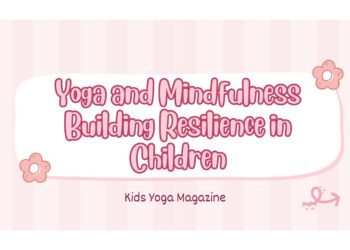In today’s world, where screens often dominate children’s attention, finding ways to keep them active and healthy is more important than ever. Combining yoga with traditional forms of exercise offers a well-rounded approach to fitness that not only strengthens the body but also nurtures the mind and spirit. This perfect combo can help children develop physical strength, flexibility, focus, and emotional resilience, all while having fun. Here’s why integrating yoga with exercise is an ideal way to promote kids’ health.
1. Building Physical Strength and Flexibility
Traditional exercise routines, such as running, cycling, or playing sports, are excellent for building cardiovascular health and muscle strength. However, adding yoga to the mix enhances these benefits by improving flexibility, balance, and overall body awareness.
- Strength: Exercises like running or swimming build cardiovascular endurance and muscular strength. When combined with yoga poses like Warrior Pose or Plank, kids can develop a stronger core, improve their posture, and enhance their overall physical stability.
- Flexibility: While traditional exercises often focus on specific muscle groups, yoga stretches the entire body, promoting flexibility and reducing the risk of injury. Poses like Downward-Facing Dog and Butterfly Pose help lengthen tight muscles, making kids more agile and less prone to strains.
Benefit: Combining yoga with exercise helps children develop a balanced, strong, and flexible body, supporting their physical health in a holistic way.
2. Enhancing Focus and Concentration
Exercise is well-known for boosting energy levels and improving concentration, but yoga takes this a step further by teaching mindfulness and deep focus.
- Mindful Movement: Yoga encourages children to move with intention and awareness, helping them stay present and focused. This mindfulness can enhance the benefits of traditional exercises, making kids more aware of their body’s movements and reducing the risk of distraction or injury.
- Breath Control: Many exercises, particularly high-intensity activities, can leave kids feeling out of breath or anxious. Yoga teaches breath control through practices like deep breathing and pranayama, helping children maintain steady breathing during exercise and improve their overall endurance.
Benefit: Yoga and exercise together help sharpen focus and concentration, giving children the mental tools they need to succeed in both physical activities and academic pursuits.
3. Promoting Emotional Balance and Stress Relief
While exercise is a great way to release pent-up energy and reduce stress, yoga offers additional tools for managing emotions and promoting mental health.
- Emotional Awareness: Yoga teaches kids to connect with their emotions and understand how their bodies respond to different feelings. This emotional intelligence helps them manage stress and anxiety more effectively, especially after a challenging workout.
- Relaxation Techniques: After an intense exercise session, yoga poses like Child’s Pose or Savasana can help calm the nervous system and promote relaxation. These techniques allow children to transition smoothly from activity to rest, preventing burnout and promoting recovery.
Benefit: The combination of yoga and exercise supports emotional balance and stress relief, helping kids manage the demands of school, sports, and social life with greater ease.
4. Encouraging a Lifelong Love of Physical Activity
One of the most important aspects of combining yoga with exercise is that it makes physical activity enjoyable and sustainable. By offering variety and fun, this combination can foster a lifelong love for movement.
- Variety: Traditional exercises provide cardiovascular and strength benefits, while yoga adds flexibility, balance, and mindfulness. This variety keeps kids engaged and prevents boredom, making them more likely to stick with an active lifestyle.
- Fun and Playfulness: Yoga’s playful approach, especially when tailored to kids with animal poses or storytelling, can make exercise feel less like a chore and more like an adventure. This enjoyment encourages kids to stay active and look forward to their fitness routines.
Benefit: The combination of yoga and exercise creates a balanced, enjoyable approach to fitness that can inspire children to maintain an active lifestyle throughout their lives.
5. Improving Social Skills and Teamwork
Both yoga and traditional exercises often involve group activities, which can enhance social skills and foster a sense of community among children.
- Group Yoga Classes: Practicing yoga in a group setting teaches kids the importance of cooperation, respect, and shared focus. Partner poses and group activities encourage teamwork and communication, which are essential for developing social skills.
- Team Sports and Yoga: For children involved in team sports, yoga can improve coordination, balance, and mental focus, which can enhance their performance on the field. It also helps them manage the pressures of competition and develop a healthy attitude towards teamwork and sportsmanship.
Benefit: By combining yoga with exercise, children can improve their social interactions, learn the value of teamwork, and build a supportive community around physical activity.
Conclusion
Yoga and exercise together create the perfect combination for promoting children’s health, offering a holistic approach that supports physical, mental, and emotional well-being. This balanced routine not only strengthens the body and enhances flexibility but also sharpens focus, reduces stress, and fosters a lifelong love for physical activity. Whether practiced individually or as part of a group, this combination helps children develop the skills and habits they need to thrive in all areas of life. By integrating yoga with traditional exercise, parents and educators can support kids in building a foundation for a healthy, active, and balanced future.











